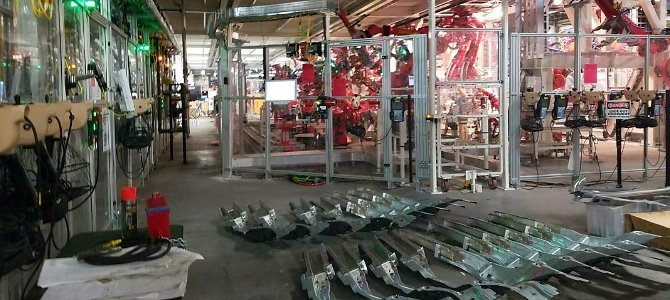
George Orwell famously wrote that “to see what is front of ones nose takes a constant struggle,” and it turns out that the answer to one of the biggest mysteries in the auto industry has been hanging out directly in front of the public’s nose for some time. In a January 2017 application [PDF] for sales tax exemption (STE) from the CAEATFA program, the California Treasurer revealed that
“Tesla represents the Project will launch the Model 3 and provide the capacity to produce and deliver an average of 226,563 units per year over a five year period, in addition to its Model S and Model X production.”
This revelation provides an unprecedented clarity about Tesla’s production ambitions for its “more-affordable” Model 3 sedan, and contradicts representations that Tesla executives have made in quarterly conference calls with analysts and the media.
During the company’s Q2 2017 earnings call, Tesla CEO Elon Musk said
“What we have ahead of us, of course, is an incredibly difficult production ramp. Nonetheless, I think we’ve got a great team, and I’m very confident that we will be able to reach a production rate of 10,000 vehicles per week towards the end of next year. And we remain – we believe on track to achieve a 5,000 unit week by the end of this year.
So, I would simply urge people to not get too caught up in what exactly falls within the exact calendar boundaries of a quarter, one quarter or the next, because when you have an exponentially growing production ramp, slight changes of a few weeks here or there can appear to have dramatic changes, but that is simply because of the arbitrary nature of when a quarter ends.
But what people should absolutely have zero concern about is that Tesla will achieve a 10,000 unit production week by the end of next year.”
Musk’s careful wording turns out to have been quite deliberate: by stating that Tesla will achieve “a 10,000 unit production week” by the end of 2018 he left himself some wiggle room. The only way both of these statements can be true is if Tesla builds 10,000 vehicles in one week next year but still averages just 226,563 Model 3s per year over the next 5 years. But by emphasizing an unsustainable peak production rate, Musk’s statement is still highly misleading in light of the five-year average annual production number Tesla provided CAEATFA.
To understand just how misleading Musk’s statement was, some context and math is necessary. A previous STE request, reported exclusively by Daily Kanban, revealed that Tesla is expanding annual production of its “Gen2” vehicles (Models S and X) to 195,000 units per year, or about twice current sales levels. Add that to the 226,563 average in the most recent STE application and you get a total annual production rate of 421,563 units per year for Tesla’s entire product line. Divide that number by 52, and you get a weekly production rate of 8,106 vehicles per week.
That is 20% lower than the guidance that Musk told investors they should have “zero concern about,” but even that number would require Model S and X production to double over the course of 2018. Production of the Gen2 vehicles has been flat over the last year, at about 25,000 units per quarter (24,882 in Q4 2016, 25,418 in Q1 2017, 25,708 in Q2 2017 and 25,336 in Q3 2017). If this trend indeed reflects flattening demand for Models S and X, it is highly unlikely that Tesla would be able to sell its planned 195,000 unit/year capacity of these Gen2 vehicles leaving actual production even farther short of Musk’s guidance. If, for example, Gen2 demand stayed flat at about 100,000 units/year, Tesla’s annual production would be just 326,563 units per year or just 6,280 vehicles per week.
Assuming that Tesla’s five-year average of annual Model 3 production covers the 2018-2022 timeframe, the firm’s representation to CAEATFA also suggests that its Fremont facility is unlikely to meet Musk’s 2020 goal of 800,000 to a million units of production per year. In the shorter term, this revelation casts serious doubt on an unambiguous representation that Tesla made in its 2016 annual report:
We plan to build 500,000 vehicles in 2018
At the time of publication, Tesla has not responded to Daily Kanban‘s requests for comment.





